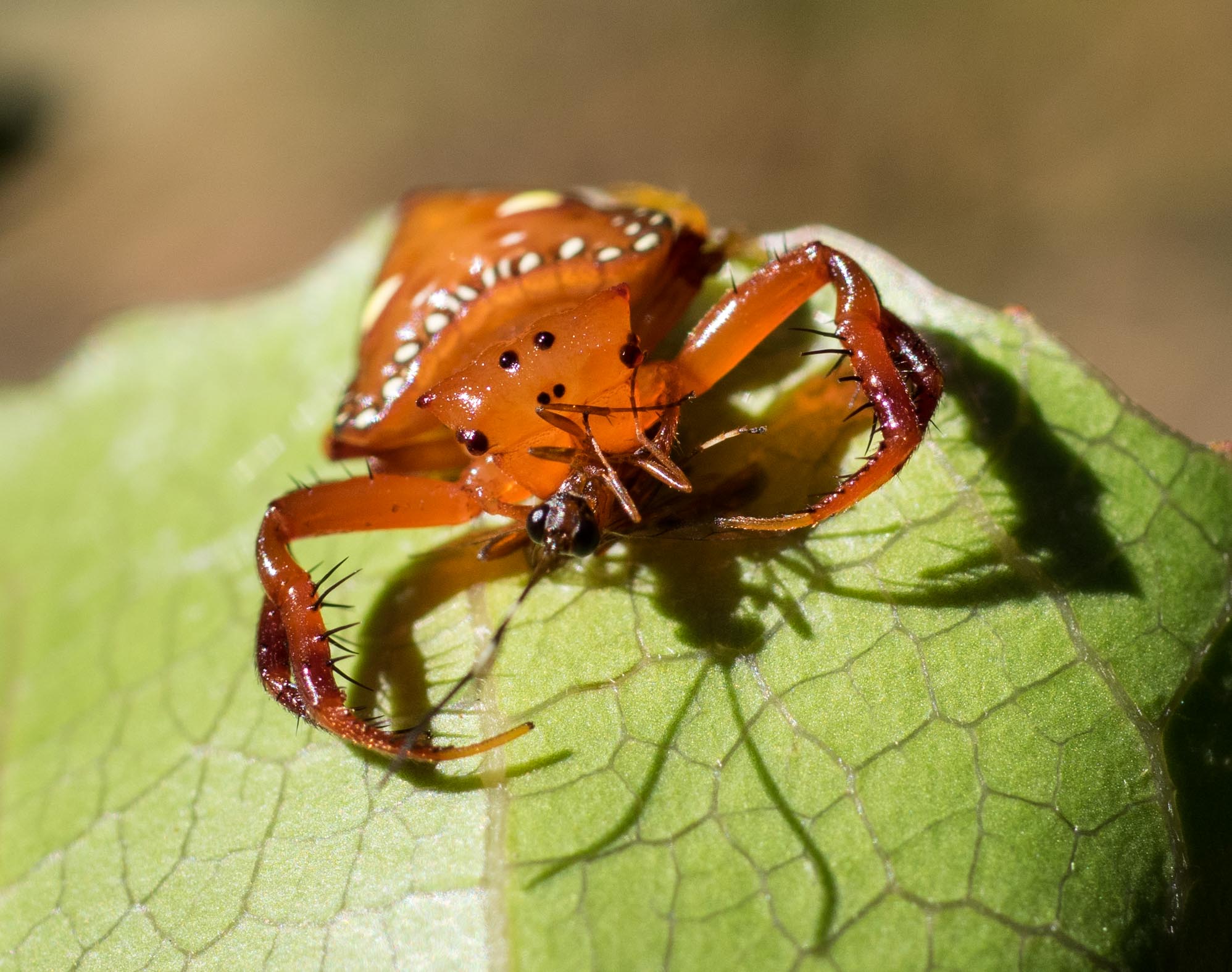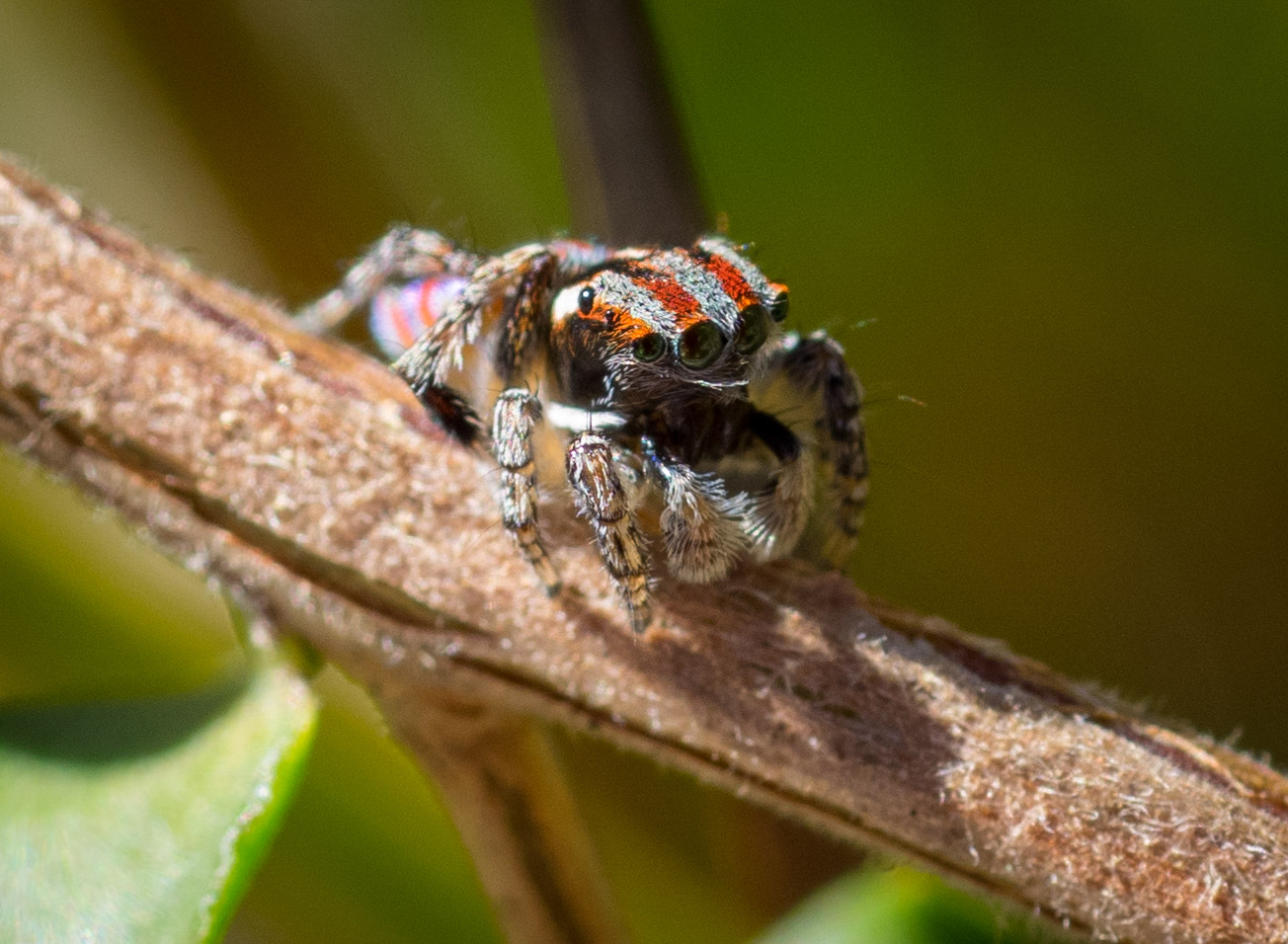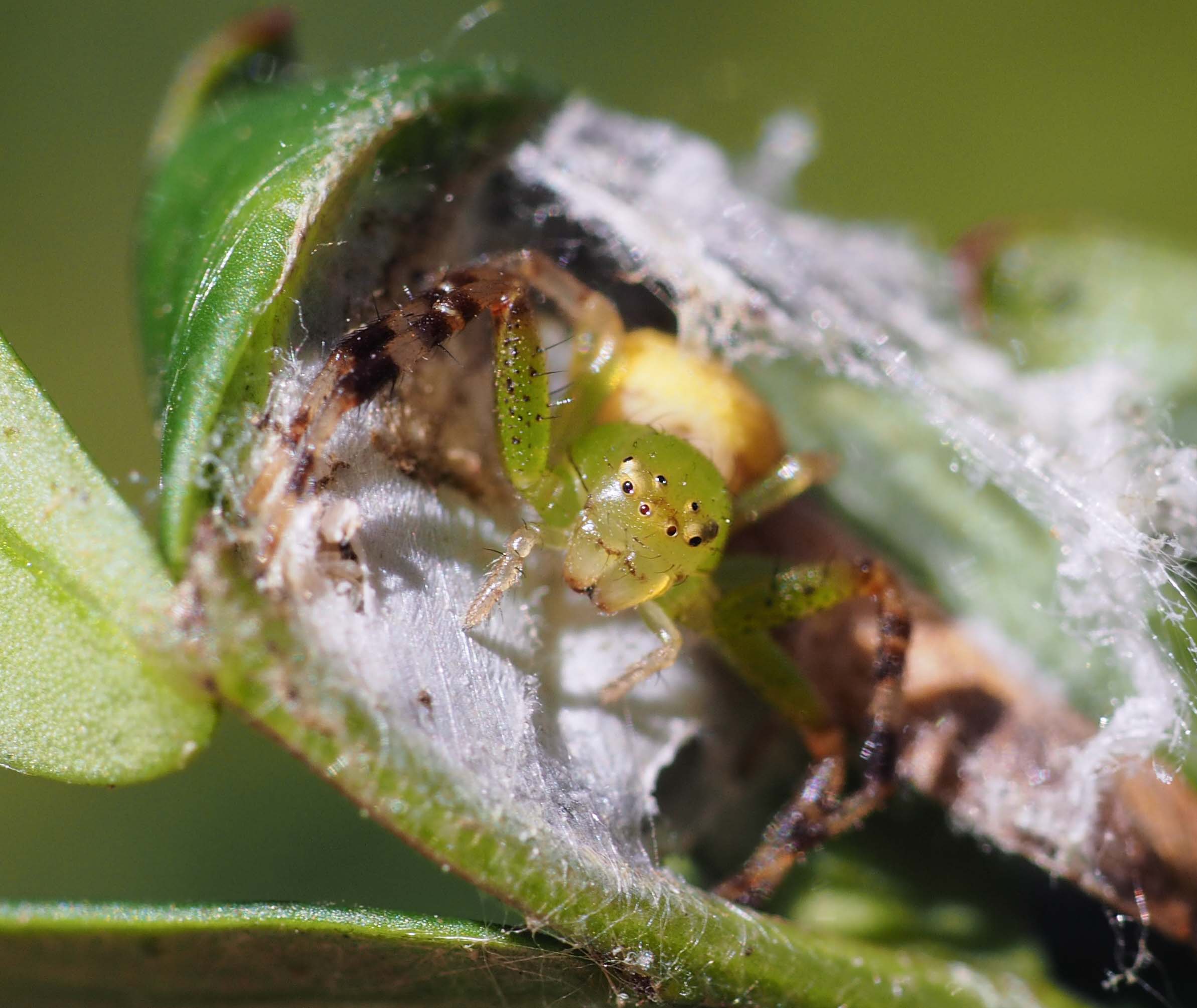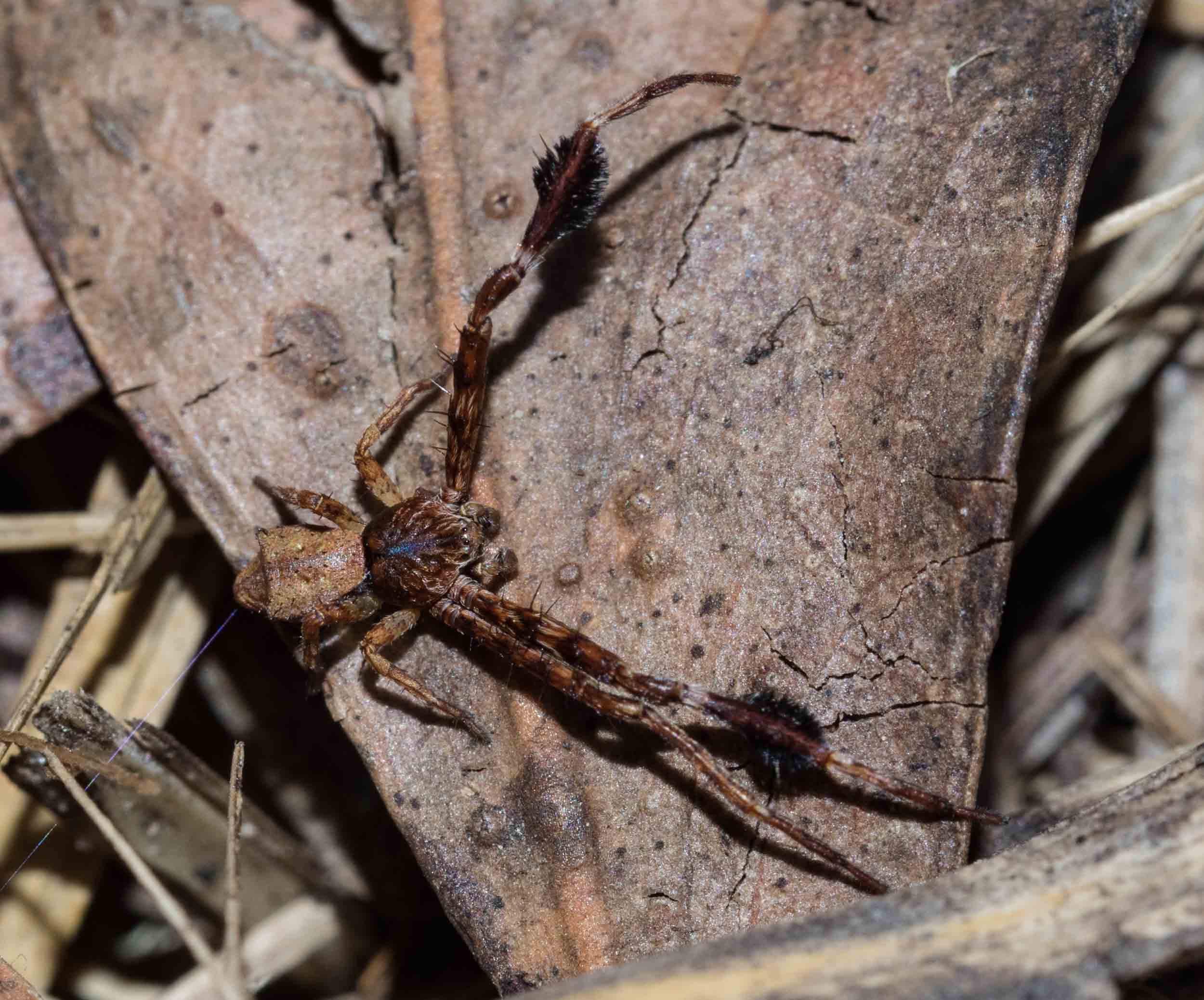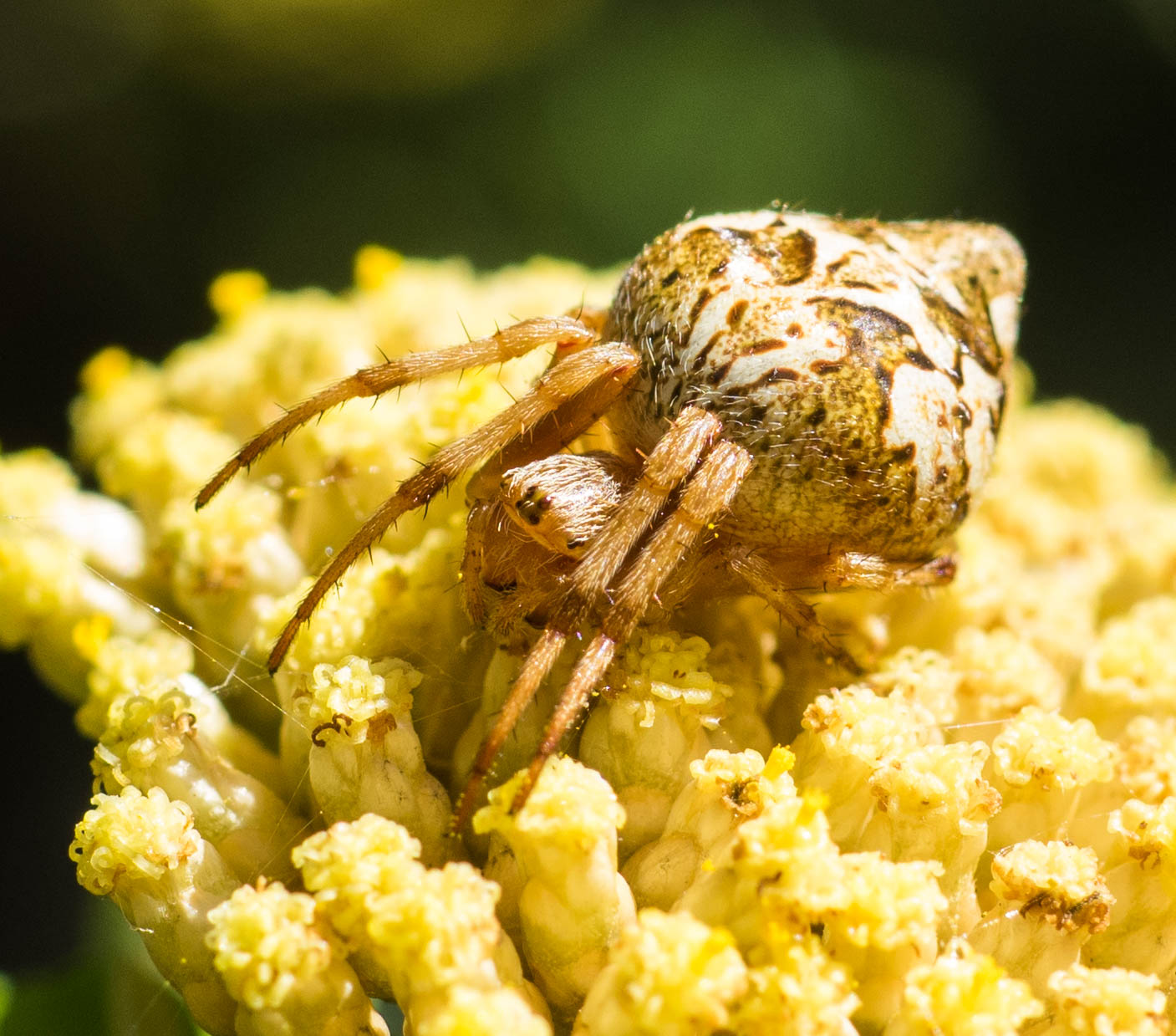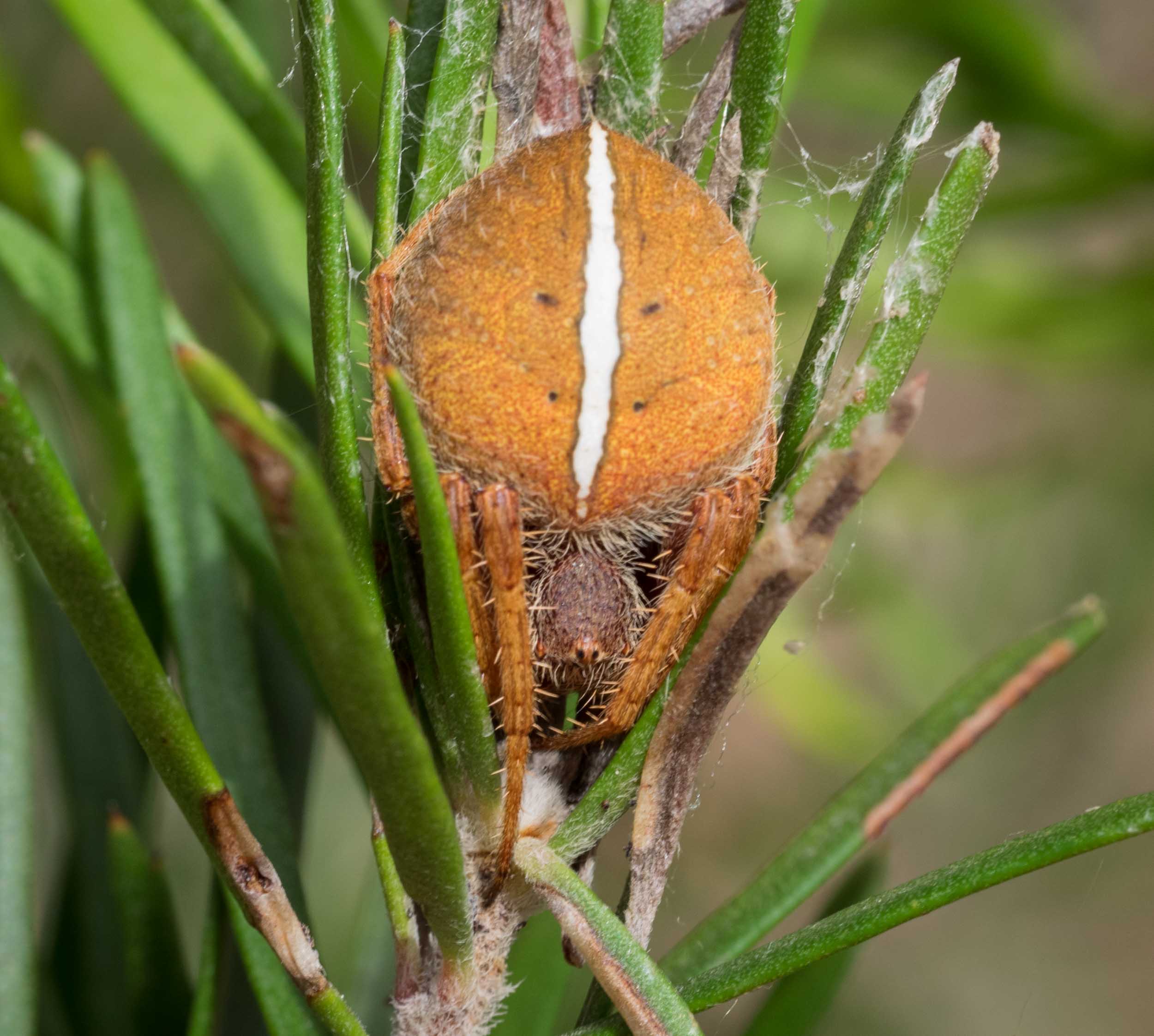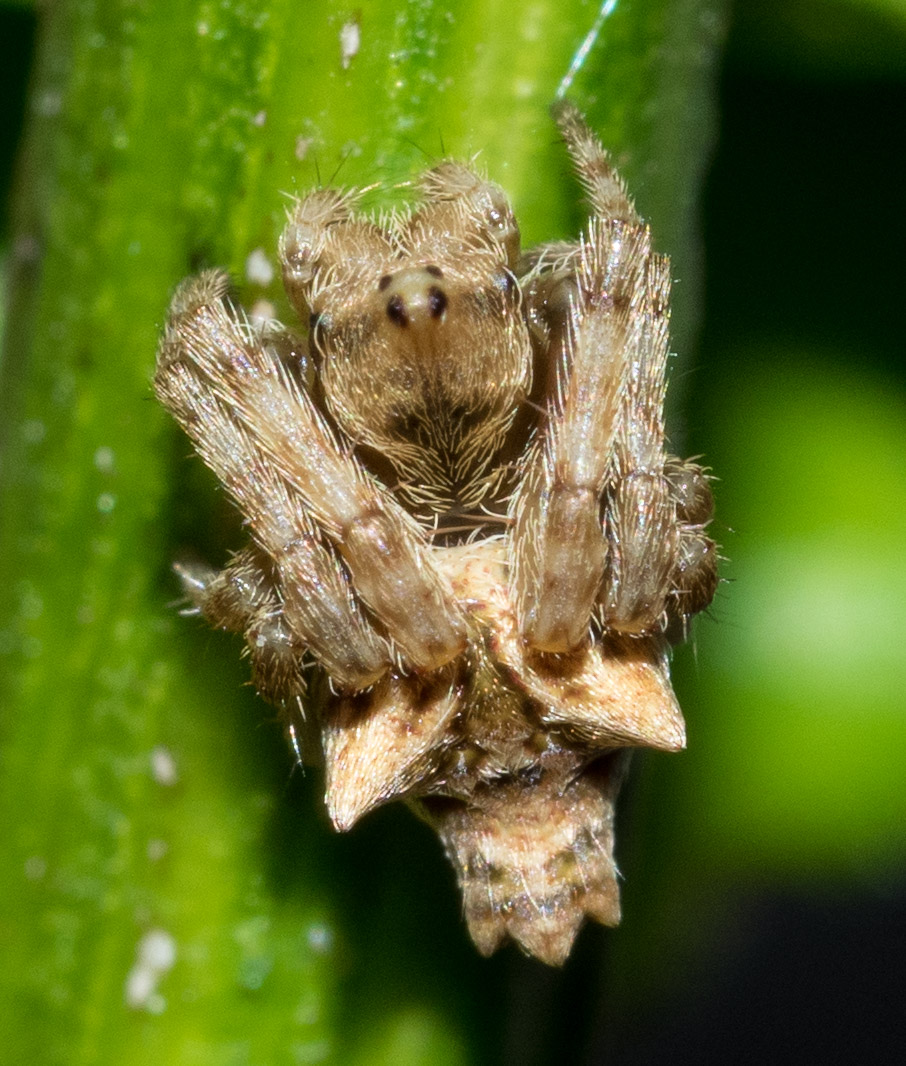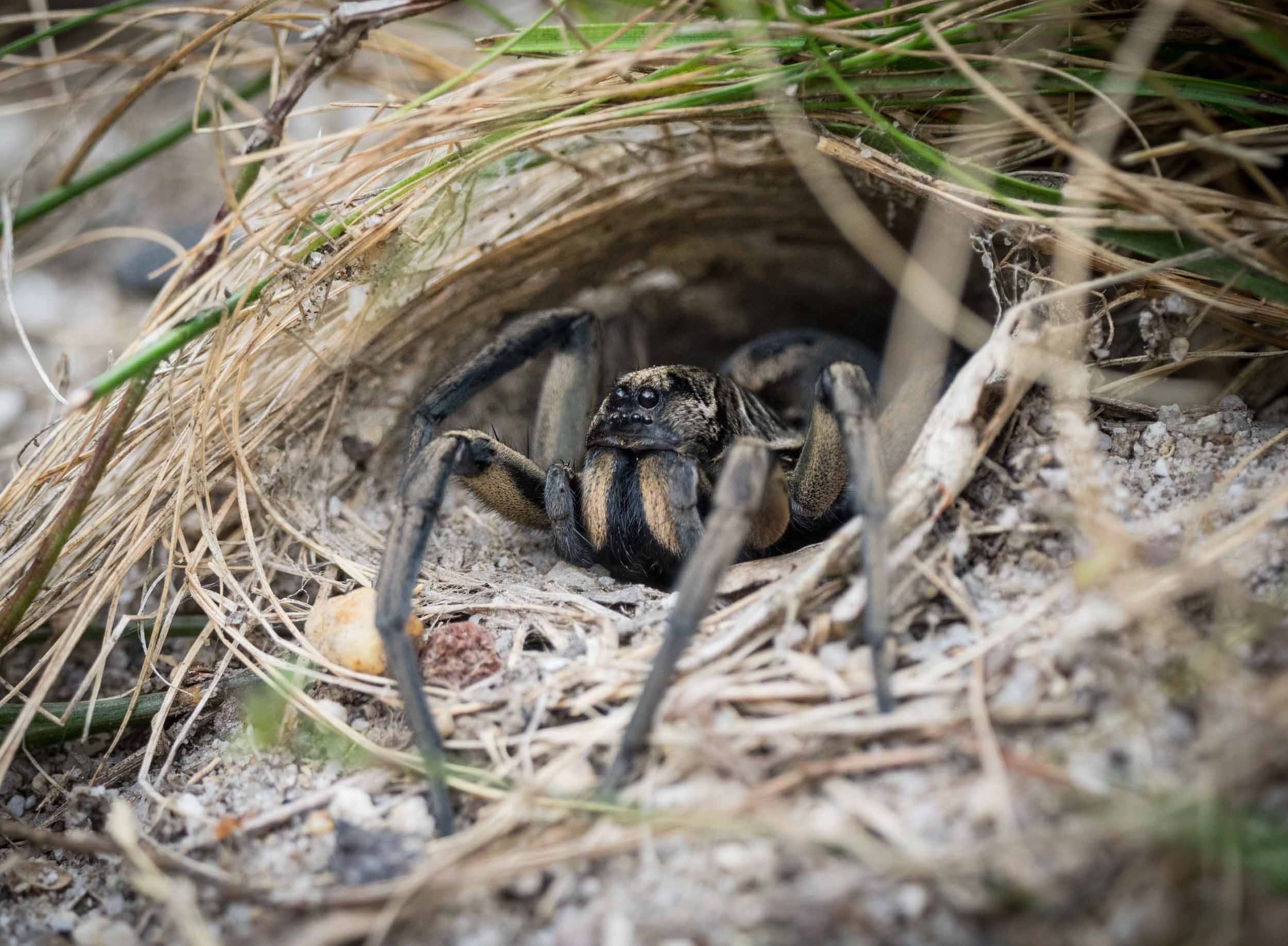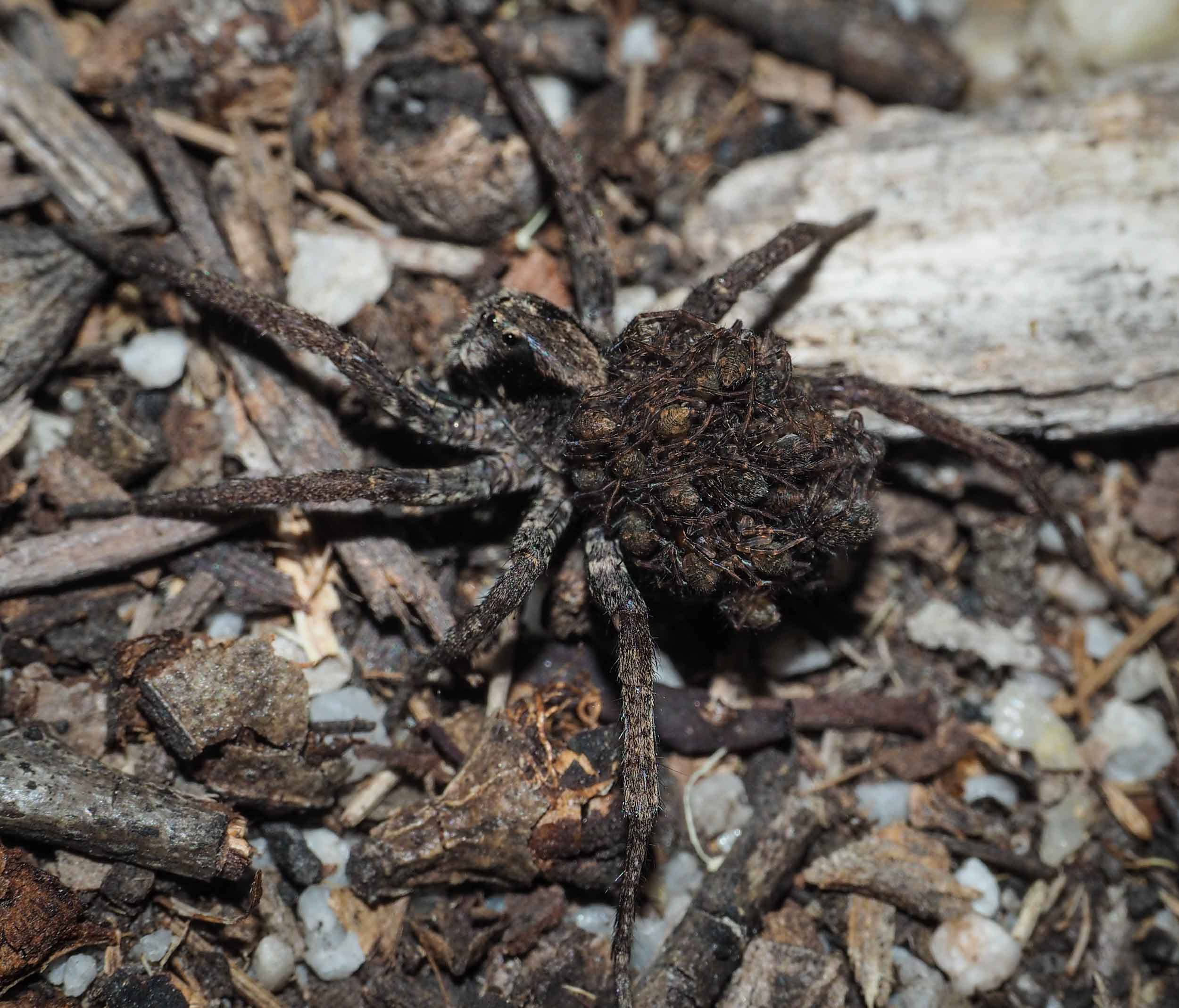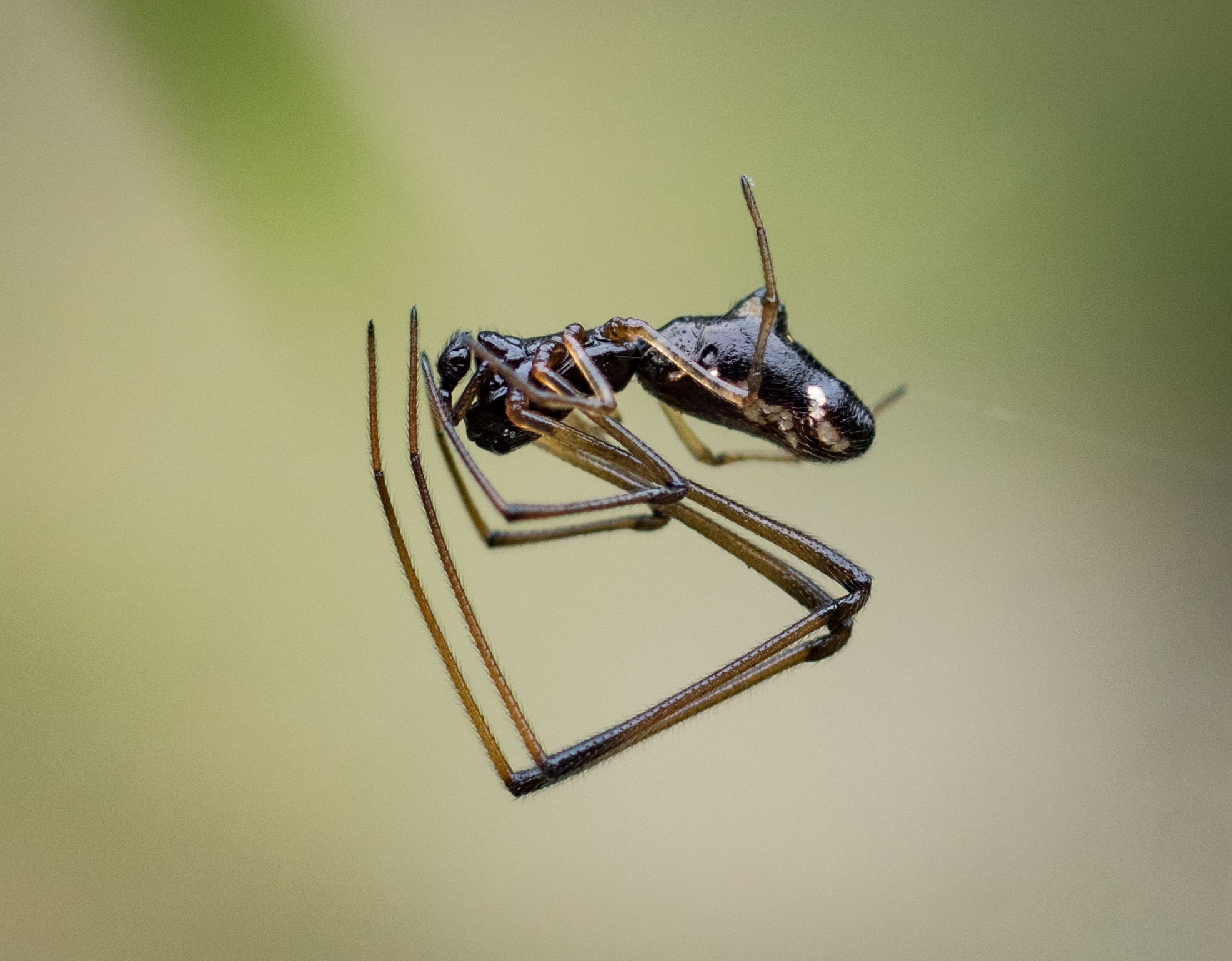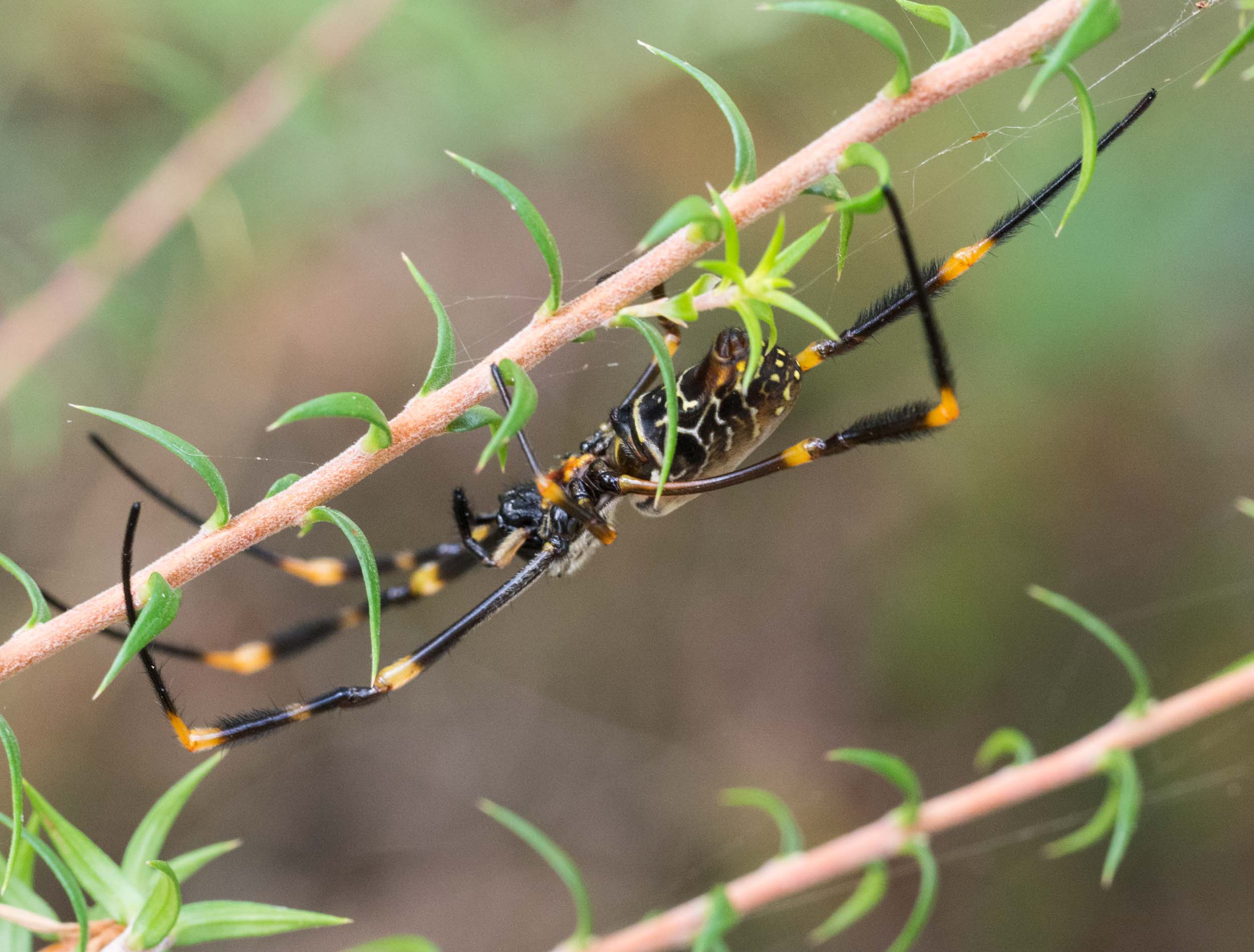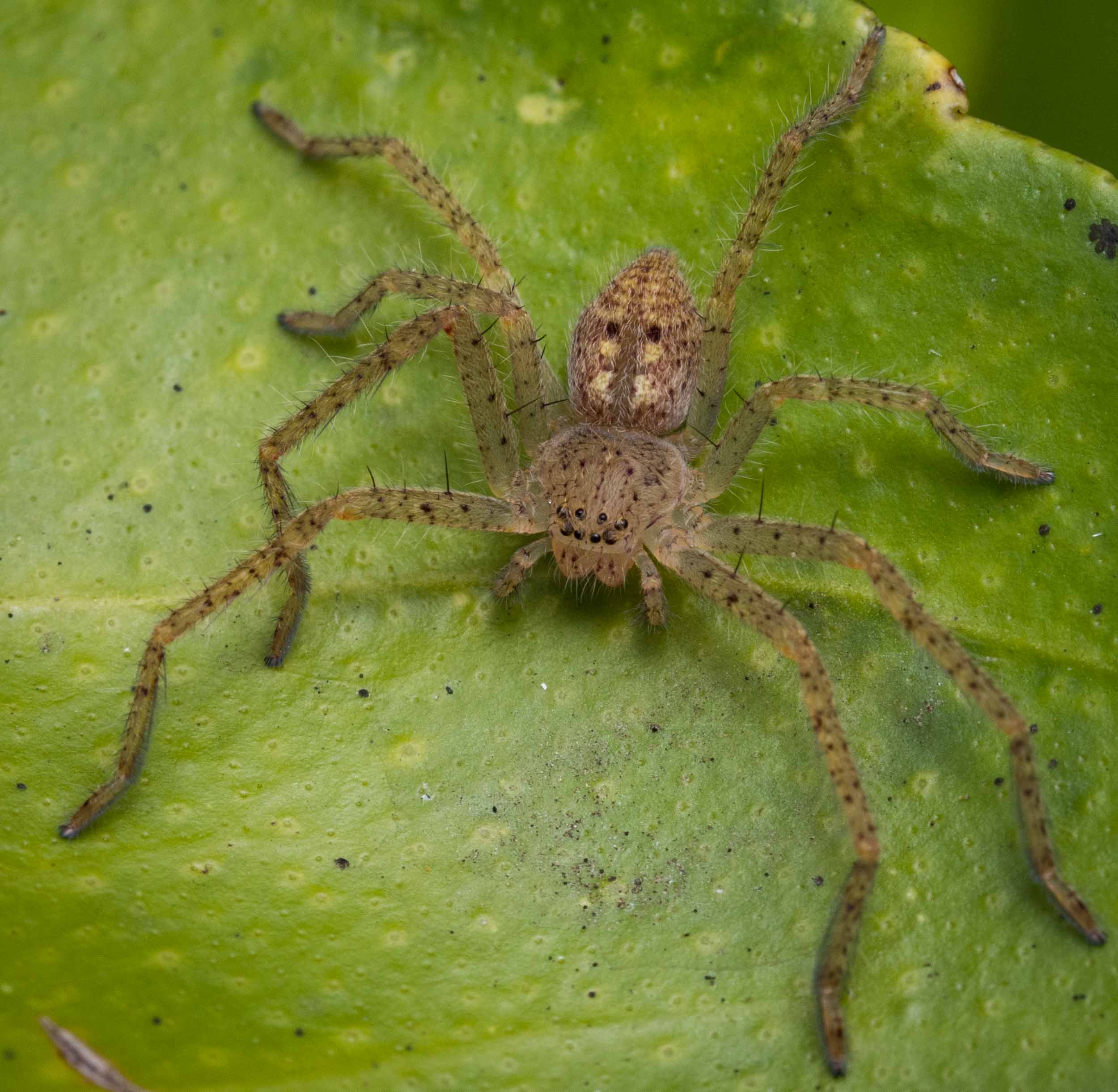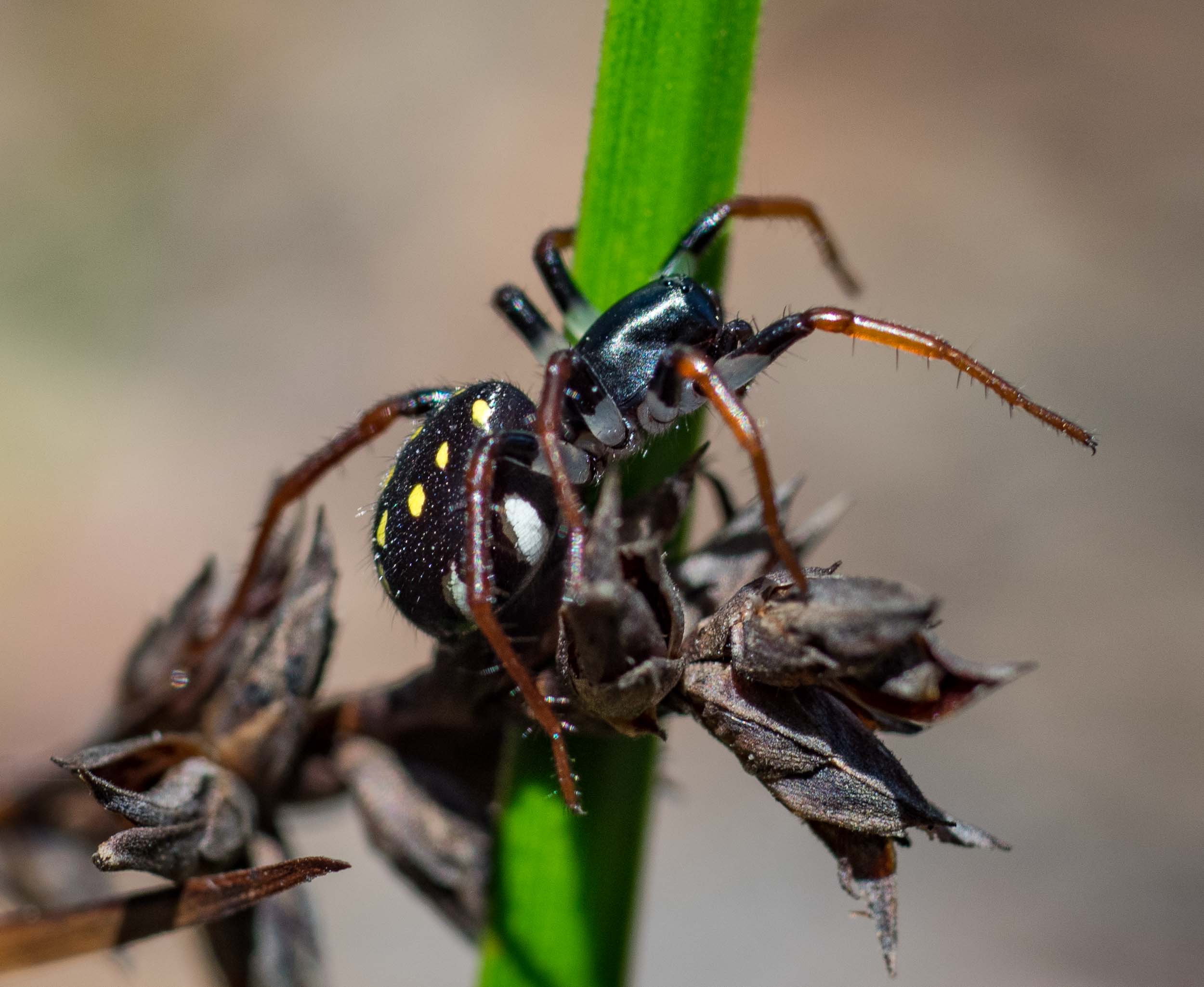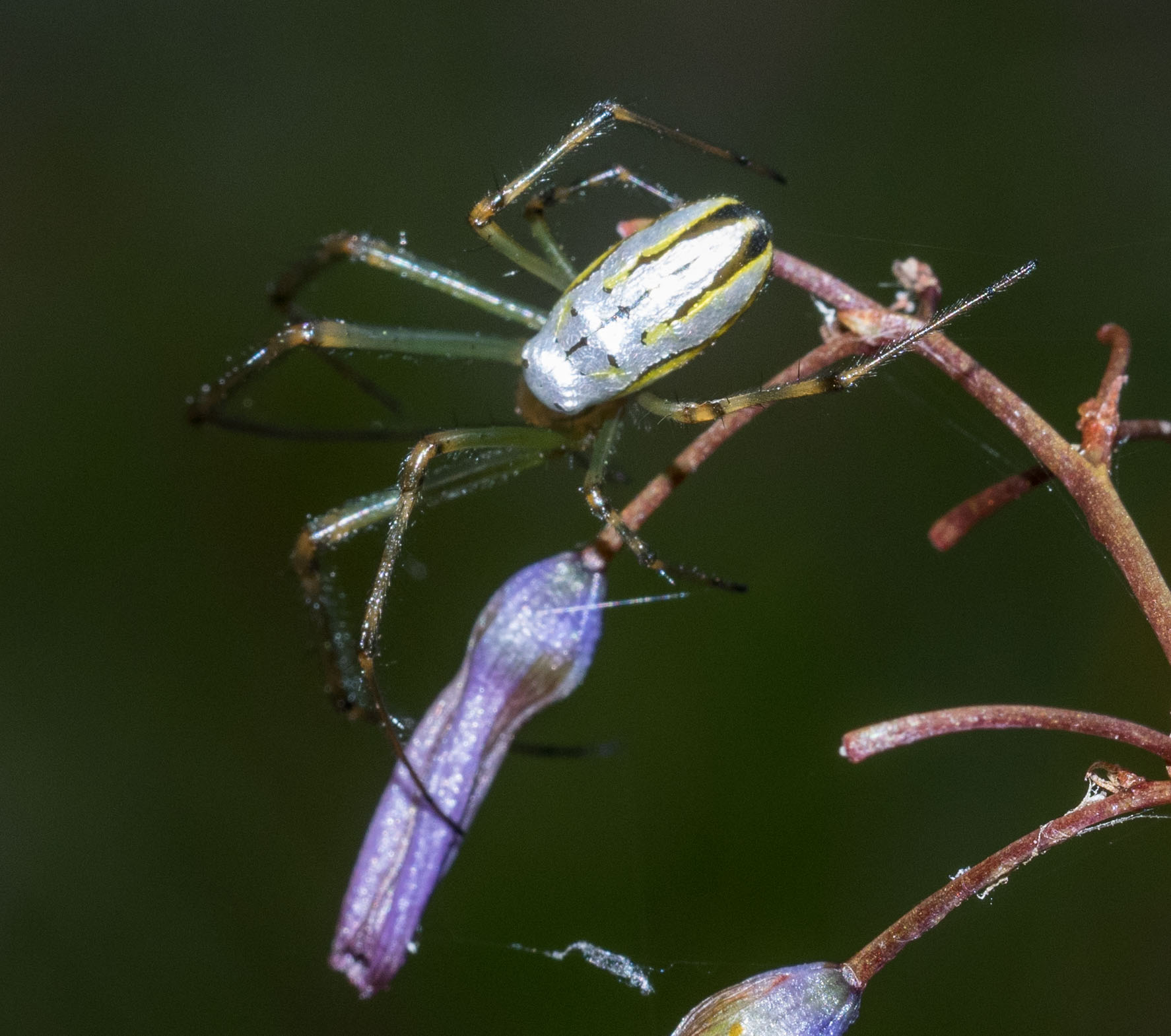Spiders: beautiful, bizarre and just a little bit scary

It's not just insects that are out and about now that Summer has arrived. Spiders too are increasing in number and diversity.
Here are a few of this week's encounters.
1: PEACOCK SPIDER ('the beautiful')
These extraordinary spiders have gained international fame since the publication of Jürgen Otto's videos of their courtship dances. Paul discovered this one patrolling its small territory of the forest floor.
Maratus volans (Flying Peacock Spider)
The species we see here in the forest is Maratus volans, the Flying Peacock Spider. Of course, they don't actually fly. The males do, however, have wing-like flaps that they inflate and display during courtship dances. In these photos, the flaps are just visible as yellow panels along the sides of the abdomen.
Jumping spiders are wonderful subjects for photography. They look directly at the camera with their huge 'front' eyes, and in combination with their furry palps they look rather like small kittens. Check out Paul's video below to see what I mean.
2: CRAB SPIDER ('also beautiful')
This pretty little species is an ambush hunter. It tends to sit atop flowers, relying upon camouflage as it awaits unwary insect visitors. And so it is quite easy to find and photograph.
Sidymella rubrosignata (Red-tipped Crab Spider)
3: LONG-JAWED SPIDER ('the bizarre')
These weird-looking spiders (Tetragnatha sp.) typically hunt above water. Their webs criss-cross our frog pond and the spiders hide by tucking their long legs into alignment with the plant stems.
4: MOUSE SPIDER ('the slightly scary')
During my morning walk today I came across this rather formidable looking fellow. He was out in the open, perhaps in search of a mate. I managed to safely carry him home (balanced - carefully - on top of my mobile phone!). Unlike most mygalomorph spiders, mouse spiders wander by day, which is why I managed to find him at this time of the day.
Missulena sp. (Mouse Spider)
The widely spaced eyes, the somewhat inwardly pointing fangs and the steeply rising caput (from part of carapace bearing the eyes) identify it as a mouse spider. It appears to match images of Missulena dipsaca on the Find-A-Spider website.
Impressive fangs! The drop of venom seen here suggests that he was not well-pleased by all the attention. The mouse spider venom is supposed to be similar in its toxicity to that of the Australian Funnelweb spider. However it seems that they rarely inject venom when they bite, choosing to reserve it for a prey item.
This image also shows the male copulatory organ, which is positioned at the tip of the pedipalps, the first pair of appendages. It is the reddish coloured globular object with a sharp tip. The male spider fills this with semen before inserting it into the female's gonopore during copulation.
After taking these few photos we released him back into the forest.

















